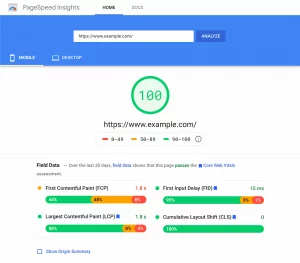As a website owner, keeping your visitors engaged and satisfied is paramount. To achieve this goal, it is essential to ensure that one crucial factor is in place for your website to load quickly, not only for user experience but also for better search engine rankings. This is where caching becomes essential in case of NGINX vs Varnish.
Caching involves creating a high-speed data storage layer that can swiftly deliver requested data. In simpler terms, it’s like having a quick-access memory for your website. When a user requests data, the cached copy is retrieved, significantly reducing loading times. While caching is vital for speed, it’s not the only solution.
Other effective techniques include caching, using a Content Delivery Network (CDN), and optimizing images.
In this article, we’ll explore two popular caching solutions—Varnish and NGINX—each contributing to the enhancement of your website’s speed. Choosing the right caching solution can significantly impact your website’s performance and the overall satisfaction of your visitors.
What is Varnish?
Varnish is a cache HTTP reverse proxy and front-end accelerator designed to enhance the performance of dynamic and content-heavy websites by handling high traffic efficiently. It acts as a layer between the user and the web server, caching both static and dynamic content to significantly improve the user experience. It’s important to note that Varnish is not a standalone solution; it requires a dedicated web server like Nginx or Apache to function.
Key Features of Varnish:
HTTP Reverse Proxy: Provides anonymization, SSL download, and GZIP compression for improved performance.
- Load Balancer: Accelerates static page delivery, enhancing overall website speed.
- Cache Configuration via VCL: Allows flexible cache configuration using the Varnish Configuration Language.
- Security Enhancement: Offers improved security against DDoS attacks.
- ESI and HTTP/2 Support: Supports Edge Side Includes (ESI) and HTTP/2 for efficient content delivery.
- Built-in Purging: Provides capabilities for purging cached content.
Pros of Varnish:
- Speed Boost: Significantly improves server and website speed.
- Performance Improvements: Delivers assets efficiently, reducing the workload on the origin server.
- TTFB Reduction: Shortens Time To First Byte (TTFB) due to lower processing time for the backend server.
- High Availability: Serves cached content even during web server downtimes, ensuring continuous results.
- Cost Reduction: Lowers overall website operational costs.
Cons of Varnish:
- Unix Compatibility: Only compatible with Unix operating systems.
- Limited SSL Support: This does not provide standard SSL support.
- Non-Real-Time Cache Updates: Lack of real-time updates in the cache.
Despite these disadvantages, Varnish’s benefits in terms of speed, performance, and cost reduction make it a valuable tool for optimizing website responsiveness and user satisfaction.
What is Nginx?
Nginx is an open-source software with a versatile set of functionalities, serving as a load balancer, caching solution, reverse proxy, web server, and more. Its capabilities include acting as a proxy server, mail proxy, HTTP cache, and micro-caching, all contributing to the reduction of website load times.
Key Features of Nginx:
- Versatility: Offers functionalities for load balancing, caching, reverse proxy, web serving, and media streaming.
- Caching: Improves website performance and handles high traffic efficiently through caching solutions.
- Low Memory Usage: Features low memory usage and high concurrency for optimized resource utilization.
- Asynchronous, Event-Driven Approach: Using an event-driven approach to handle requests asynchronously, avoiding the need to create new processes for each web request.
- Master-Worker Architecture: Employs a master process that controls multiple worker processes, enhancing overall efficiency.
Pros of Nginx:
- Consistent Code Base: The code base is consistently compared to other alternatives.
- Modern Design: Offers a modern design and a more straightforward configuration format.
- Event-Based Processing: Handles multiple connections with minimal overhead due to context switching.
- Resource Efficiency: Uses less memory and resources, making it efficient.
- Speed and Google Ranking: Enhances website speed, contributing to better Google rankings.
- Compatibility: Compatible with various web applications such as Ruby on Rails, Python, Joomla, etc.
- Concurrency Handling: Efficiently transforms dynamic content into static content and manages thousands of concurrent connections simultaneously.
Cons of Nginx:
- Smaller Community Support: Smaller community support compared to alternatives like Apache.
- Limited Modules and Extensions: It doesn’t offer as many modules and extensions as some other web servers.
- Perception in Development Community: Some developers may not choose Nginx due to the perceived quality of other web servers.
Understanding both the strengths and weaknesses of Nginx is crucial for informed decision-making. While it may have some limitations, its efficiency, speed, and compatibility make it a valuable choice for many web applications. The comparison with Varnish will further aid in determining the best-suited solution for specific requirements.
Speed Test Comparison: Nginx vs Varnish
When evaluating the speed performance of Varnish and Nginx, it’s important to consider various factors that may influence test results. Different tests may yield different conclusions, as variables like concurrent user load and cache configurations play a significant role.
A speed test conducted by spinupwp compared the performance of Nginx using FastCGI with that of Varnish. In the Nginx test, after 27,170 hits, the average response time was recorded at 82 ms.
On the other hand, the Varnish test, generating 26,440 hits, showed an average response time of 100 ms.
These results suggest that, in this specific test scenario, Nginx demonstrated a faster average response time compared to Varnish. However, it’s crucial to note that speed test outcomes can vary based on the specific configurations, workload, and use cases. Therefore, the choice between Varnish and Nginx should be made considering the unique requirements and characteristics of the intended application or website. It’s recommended to conduct thorough testing and analysis in the context of your specific use case to determine which caching solution better aligns with your performance goals.
NGINX vs Varnish – Choosing the Perfect Performance Partner for Your Website
When it comes to optimizing your website’s speed and performance, both NGINX and Varnish stand out as powerful tools in the caching world, but they shine in different ways. The right choice for you depends on the unique needs of your site, its traffic load, and what specific performance goals you aim to achieve.
NGINX is the Swiss Army knife of web servers, offering exceptional versatility. With its efficient memory usage, event-driven model, and multi-tasking abilities, NGINX excels at everything from load balancing and reverse proxying to caching. It’s the ideal choice if your web application requires broad functionality and you want a robust, reliable solution that can handle diverse tasks seamlessly.
Meanwhile, Varnish is your turbocharger for high-speed website performance. Specifically designed to accelerate front-end traffic, Varnish focuses on reducing load times and optimizing caching. If you’re dealing with high traffic volumes and need to keep your server’s response time as low as possible, Varnish will work wonders by dramatically reducing Time To First Byte (TTFB) and boosting site speed.
If you want to make the most of NGINX, Varnish, and other advanced caching techniques, Nestify is the hosting solution designed to supercharge your website performance. With Nestify, you don’t need to worry about managing complex configurations; we’ve got you covered with a fully optimized environment that runs on cutting-edge technology.
FAQs on NGINX vs Varnish
Which is faster, NGINX or Varnish?
Test results may vary, but in some scenarios, NGINX has shown faster response times compared to Varnish. However, the choice depends on the specific use case and configurations.
What factors should I consider when choosing between NGINX and Varnish?
Consider factors such as your website’s traffic volume, caching needs, compatibility with other applications, memory usage, and your specific performance goals.
Can I use both NGINX and Varnish together?
Yes, it’s possible to use NGINX and Varnish together in a configuration known as a “double proxy” setup, where NGINX handles certain tasks and forwards requests to Varnish for caching.
Does the choice between NGINX and Varnish impact SEO?
Both NGINX and Varnish can contribute to improved website speed, which is a factor in SEO rankings. The impact on SEO depends on various factors, and it’s advisable to assess your overall website performance.



